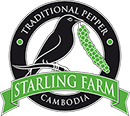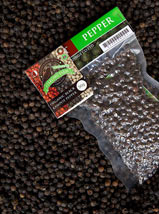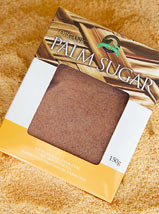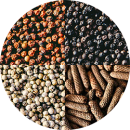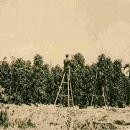THE COLOURS
All four peppercorns, green, black, white and red, come from the same vine, the Piper Nigrum. The differences in colour and nuances of flavour are the result of processing methods and harvesting at various stages of ripeness. During the harvest season, around March-April, the whole fruit spikes are hand-picked when the fruits are mature but still green for black pepper; and when a few fruits have turned red and the rest are yellow.
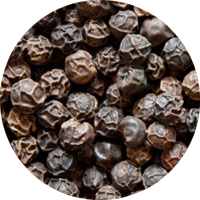
Black pepper
Black pepper is produced from the still-green, unripe drupes of the pepper plant. The drupes are cooked briefly in hot water, both to clean them and to prepare them for drying; the heat ruptures cell walls in the pepper, speeding the work of browning enzymes during drying. The drupes are dried in the sun for several days, during which the pepper around the seed shrinks and darkens into a thin, wrinkled black layer.
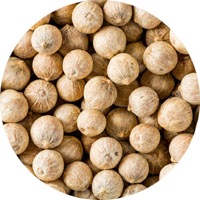
White pepper
White pepper consists solely of the seed of the pepper plant, with the darker-coloured skin of the pepper fruit removed. This is accomplished by a process call retting, where fully ripe yellow and red pepper berries are soaked in water for a few days, during which the flesh of the pepper softens and decomposes. Rubbing then removes what remains of the fruit, and the naked seed is sun dried.
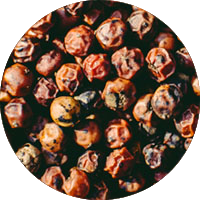
Red pepper
Red pepper is produced from the red fully mature berries, following the same process as the black pepper. After being hand sorted to separate them from the green drupes, the red fruits are cooked briefly, before being spread out to dry in the sun for several days. Red pepper is a rarity since it is a risky business to leave the spikes on the vine for so long. Drought or heavy rain can wipe out an entire crop, as can hungry birds.
THE TASTES
The black Kampot pepper delivers a strong and delicate aroma. It’s deep on the mouth and has a long intensity on the tongue. Compare to most black peppers which are spicy but lack any additional flavours, black Kampot pepper is much more sophisticated. Its taste, with flavours which can range from intensely spicy to mildly sweet, reveals hints of flower, eucalyptus and mint.
The white Kampot pepper develops an intense bouquet and delicate aroma. Its strong spicy taste carries notes of fresh grass and lime. It’s important that the seeds are fully mature (the stage when piperine content reaches its peak) because without the husk and its essential oils, the seed alone is responsible for providing the hot pungent flavour.
The red Kampot pepper delivers a powerful and fruity aroma. Its taste combines the spicy, mature flavour of black pepper with a delicious sweetness. This disconcerting pepper allows for the wildest combinations, from wild meat seasoning to vanilla desserts. Not to be confused with the pink peppercorns varieties which are actually the fruits of a plant from a different family and do not taste in the least peppery.
Long Kampot Pepper
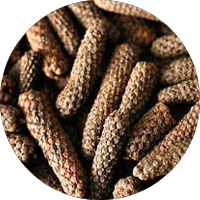
Names after its curious catkin-shaped fruits, the long pepper is native of Java, Indonesia. Starling Farm is one of the very few plantation growing long pepper in the region. This rare spice takes the advantage of the exceptional “terroir” of Kampot, with its mineral-rich soil and specific climate, and provides a unique type of pepper. Being both pungent and sweet, its complex taste is also sharper and hotter than black pepper.
This uncommon and under-appreciated spice is slowly making its way back into the hearts and recipes of the best cuisines around the world.
